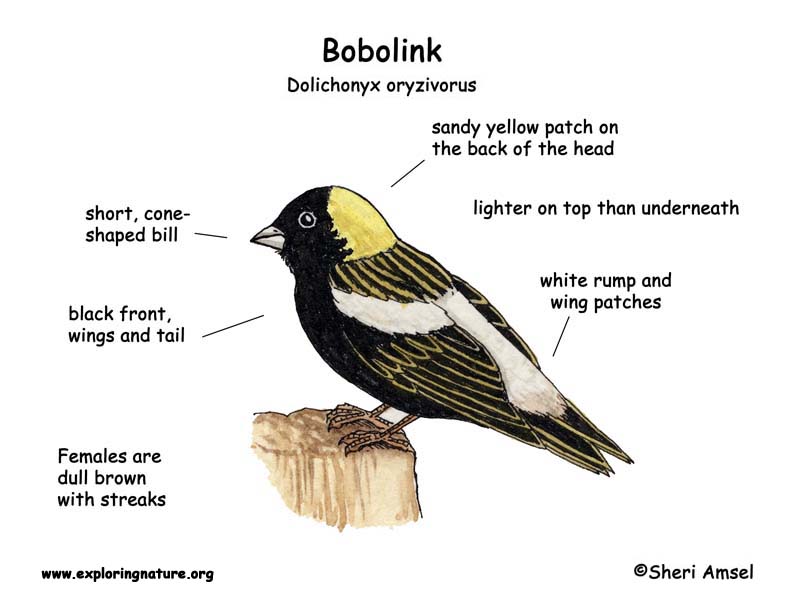

They spend the summer in Northern North America and Canada and the winter in South America.
They are found in open fields and flocking near marshlands.
They have a black front, wings and tail. Their rump is white and they have wing patches. They have a sandy yellow patch on the back of their head. They are lighter on top than underneath. They have a short, cone-shaped bill. Females are dull brown with streaks.
Bobolinks group together most of the year. They sit on fence posts or any high perch over a meadow and sing.
Bobolinks eat mostly seeds on the ground, but while they are breeding may eat insects and worms.
Bobolinks nest in small groups. The female builds a nest of grass on the ground hidden in the high grass. She lays 3-7 eggs, which she warms (incubates) for about 2 weeks.
Kingdom: Animalia
Phylum: Chordata
Subphylum: Vetebrata
Class: Aves
Order: Passeriformes
Family: Icteridae
Genus: Dolichonyx
Species: D. oryzivorus
When you research information you must cite the reference. Citing for websites is different from citing from books, magazines and periodicals. The style of citing shown here is from the MLA Style Citations (Modern Language Association).
When citing a WEBSITE the general format is as follows.
Author Last Name, First Name(s). "Title: Subtitle of Part of Web Page, if appropriate." Title: Subtitle: Section of Page if appropriate. Sponsoring/Publishing Agency, If Given. Additional significant descriptive information. Date of Electronic Publication or other Date, such as Last Updated. Day Month Year of access < URL >.
Amsel, Sheri. "Bobolink" Exploring Nature Educational Resource ©2005-2024. December 13, 2024
< http://www.exploringnature.org/db/view/Bobolink >

